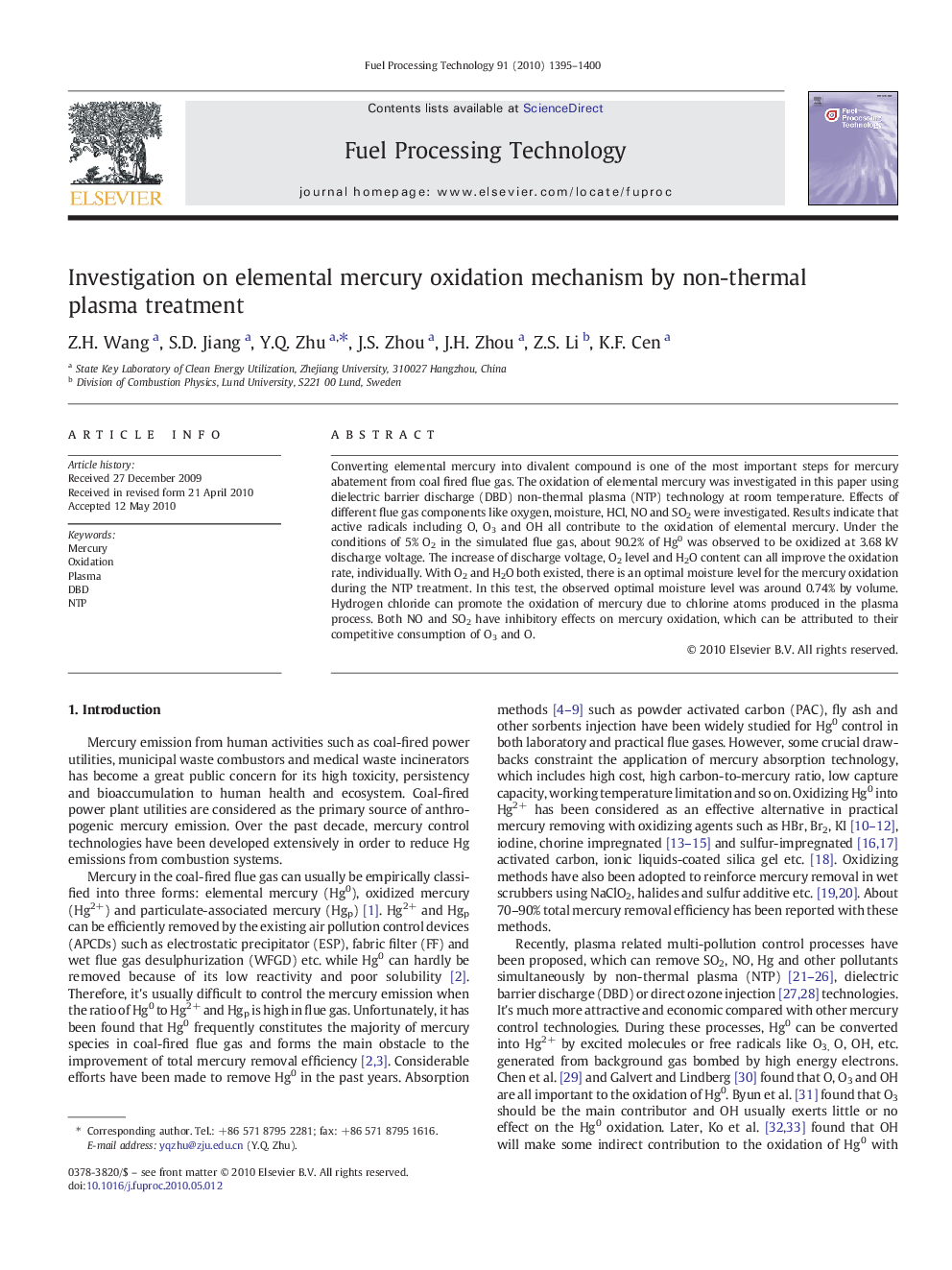| Article ID | Journal | Published Year | Pages | File Type |
|---|---|---|---|---|
| 210621 | Fuel Processing Technology | 2010 | 6 Pages |
Converting elemental mercury into divalent compound is one of the most important steps for mercury abatement from coal fired flue gas. The oxidation of elemental mercury was investigated in this paper using dielectric barrier discharge (DBD) non-thermal plasma (NTP) technology at room temperature. Effects of different flue gas components like oxygen, moisture, HCl, NO and SO2 were investigated. Results indicate that active radicals including O, O3 and OH all contribute to the oxidation of elemental mercury. Under the conditions of 5% O2 in the simulated flue gas, about 90.2% of Hg0 was observed to be oxidized at 3.68 kV discharge voltage. The increase of discharge voltage, O2 level and H2O content can all improve the oxidation rate, individually. With O2 and H2O both existed, there is an optimal moisture level for the mercury oxidation during the NTP treatment. In this test, the observed optimal moisture level was around 0.74% by volume. Hydrogen chloride can promote the oxidation of mercury due to chlorine atoms produced in the plasma process. Both NO and SO2 have inhibitory effects on mercury oxidation, which can be attributed to their competitive consumption of O3 and O.
